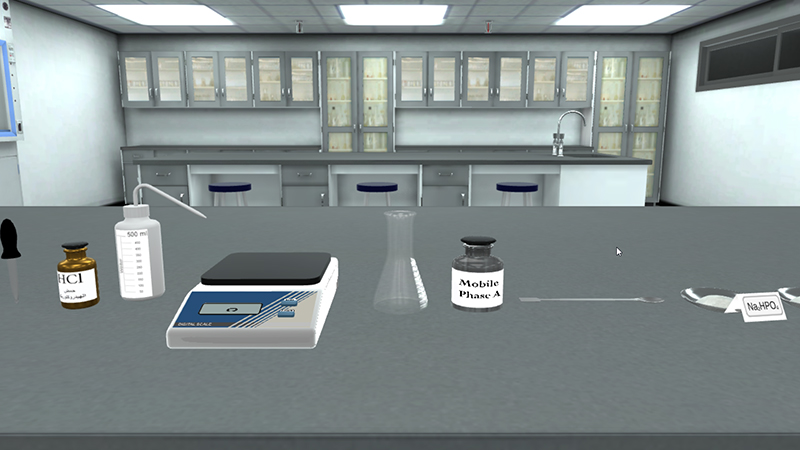High Performance Liquid Chromatography (HPLC Simulator) of proteins
Biology | Biochemistry | Proteomics






2.5M+
Active Users Worldwide
80%
Improved Learning Retention
60%
Reduction in Laboratory Costs
To separate and detect amino acids in a tissue using HPLC simulator.
HPLC - Reversed phase column chromatography.
By the end of HPLC simulation, student will be able to:
HPLC in analytical chemistry is a chromatographic method used to separate the components of a mixture.
An HPLC simulator is a valuable educational tool that replicates these processes virtually, allowing learners and researchers to understand instrument design, functionality, and chromatographic principles without requiring a physical lab setup.
The typical design of an HPLC usually involves these elements.
Method development for an HPLC online training experiment usually follows these steps:
1. Choosing the mode. In a practical HPLC simulator online, we choose the reversed phase chromatography.
2. Choosing the column and column packing dimensions. For example in online HPLC, it is suitable to use a reversed-phase column Agilent ZORBAX Eclipse Plus C18 columns and recommended guard cartridges.
3. Choosing the stationary phase chemistry.
4. Choosing the mobile phase solvents and their pH.
5. Running initial isocratic or gradient experiments to define boundary conditions and optimize the experimental conditions.
In the High Performance Liquid Chromatography experiment, analysis of amino acids in a tissue sample is done. ----
In chromatography simulation,The general steps for Amino Acid analysis include:
1. Preparation of HPLC mobile phases: filtration with vacuum pump.
2. Preparation of amino acid standards.
3. Preparation of Internal Standard (IS) stock solution.
4. Tissue sample preparation: sample is minced and prepared using perchloric acid for protein separation, then lyophilized. The dried protein then undergoes acid hydrolysis using 6 M HCL.
5. Online ortho-phthalaldehyde/9-fluorenylmethyl chloroformate (OPA/FMOC) precolumn derivatization is performed.
6. Setting the parameters of detection in an online chromatography lab.




